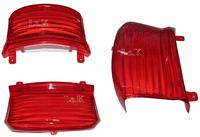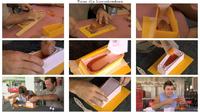Hello
The above topics are probably no longer relevant, but my answer may be helpful to others - looking for similar solutions.
In our company / PLASTKOM /, which makes injection molds and plastic details, we encounter problems that usually concern prototypes.
In the case when the number of details is a few pieces and there is no financial means to make even a trial injection mold / from several hundred to several thousand zlotys / the cheapest solution is the replacement technology:
a) making a detail from a plastic block by machining - with this method I would make the above "clamp";
b) gravity casting of chemically hardened plastics (polyester resin, epoxy resin, or types of technical silicones), provided that their properties and the obtained accuracy of the product are adequate to the expectations;
c) execution of the detail using the 3D printing method, the cost of which is close to the development of a trial form;
d) if the shape of the product allows it / coating - e.g. lampshade casing /, you can try to make a varnished plaster or wooden mold and use the technology of vacuum forming / sheet / or a combination thereof.
The detail placed in the first thread post is rather difficult to make with a substitute technology / transparency and non-unfolding surfaces /. The only sensible solution seems to be trying to form it with the vacuum method and then stick /? / Some elements.
And, for using the word "plastic" I was once thrown out of class, with the comment that plastic is used by engineers, not engineers








